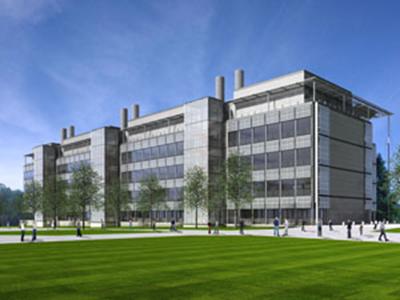
|
CHEMISTRY BUILDING
MICHAEL GALLAGHER CONSTRUCTION MANAGEMENT |
|
Note: While great efforts have been taken to provide accurate and complete information on the pages of CPEP, please be aware that the information contained herewith is considered a work-in-progress for this thesis project. Modifications and changes related to the original building designs and construction methodologies for this senior thesis project are solely the interpretation of Michael Gallagher. Changes and discrepancies in no way imply that the original design contained errors or was flawed. Differing assumptions, code references, requirements, and methodologies have been incorporated into this thesis project; therefore, investigation results may vary from the original design. |
|
MICHAEL GALLAGHER’S THESIS PROPOSAL
|
|
SENIOR THESIS MAIN PAGE PENN STATE ARCHITECTURAL ENGINEERING AE COMPUTER LABS CONTACT MICHAEL AT MJG5094@PSU.EDU This page was last updated on September 2, 2010 and is hosted by the AE department © 2010-2011 |


|
Posted 12/10/10 |
|
Senior Thesis Final Proposal is anticipated to present the four areas of research and analysis that will be completed on the Chemistry Building. These four areas came forth through the series of technical reports completed and meeting with Dr. Riley. These practical areas were chosen, based upon the idea that they could be modified based upon critical industry issues, value engineering, constructability, and schedule reduction/acceleration.
Analysis #1: Critical Industry Issue After working on the Chemistry Building for two summers and being a part of the PACE roundtable discussion, it was clear that this project is a prime example of “bringing BIM into the field.” The purpose of this analysis is to investigate additional ways BIM could have been used on the Chemistry Building besides MEP coordination.
Analysis #2: Curtain Wall System The Chemistry Building is designed to have a forty million dollar curtain wall system that is manufactured in Italy and contracted with Permasteelisa. The goal of this analysis is to determine two things. The first is to determine if breaking the contract up between multiple players can shorten lead-time and reduce the schedule. The second is to investigate other high-efficiency glazing systems to determine if a US manufacturer can produce a similar system. Glazing with PV capability will also be explored to see if it will be realistic to incorporate on the Chemistry Building.
Analysis #3: Electrical Breadth Analysis #3 will be incorporated with analysis #2. Because the curtain wall is extremely expensive, a financial analysis will be conducted to determine if a PV capable glazing systems can be substituted. The goal is to find a system that can help with the energy consumption of the building with a short payback period.
Analysis #4: Mechanical Breadth During the balancing and commissioning process of the lab penthouse AHU’s of the Chemistry Building, it was realized these five AHU’s were performing inefficiently. It was determined the cause was poor layout of duct work. The goal of this analysis is to use the BIM model to layout the duct work differently to eliminate the additional two inches of static pressure between the AHU and exhaust duct.
Breadth Topics In conjunction with Construction Management ideas, some of the analyses that will be conducted require additional analysis in other disciplines within Architectural Engineering.
Electrical Breadth As explained in Analysis #3, the electrical discipline will be used in order to complete an analysis on a photovoltaic glazing system. The major problems associated with the Chemistry Building dealt with the curtain wall system. Because of this, a photovoltaic glazing system is one of the systems that will be investigating to replace the current system. This analysis will require the calculation of the total energy produced by this system. A cost analysis will then be conducted using the cost of energy, energy savings, and comparing the initial costs of the systems. The hope is to determine the photovoltaic glass system will have a similar cost or short payback period. The next step will be determining and sizing the equipment and/or connections necessary for the Chemistry Building to utilize the solar energy produced. Because the Chemistry Building currently has photovoltaic trays on the roof, a constructability review will be performed to determine if the PV glazing system can be added to the 480V, 3 phase, 4 wire, and 2.5MVA breaker system . If it cannot be added, the system will either be resized or an additional feeder and breaker will be added.
Mechanical Breadth As explained in Analysis #4, the Mechanical discipline will be used to improve the efficiency of five of the Chemistry Building’s AHU’s. Based on calculations and information learned in AE 310, the ductwork will be redesigned. The new layout will decrease the fan speed of the AHU while maintaining the required CFM for the serviced spaces. The end result is to save energy and make these AHU’s run efficiently/how they were originally designed to. With the help from the mechanical AE faculty and equations learned in the mechanical discipline, calculations will prove the new ductwork layout improves this system’s efficiency. |
|
Posted 1/14/11 |